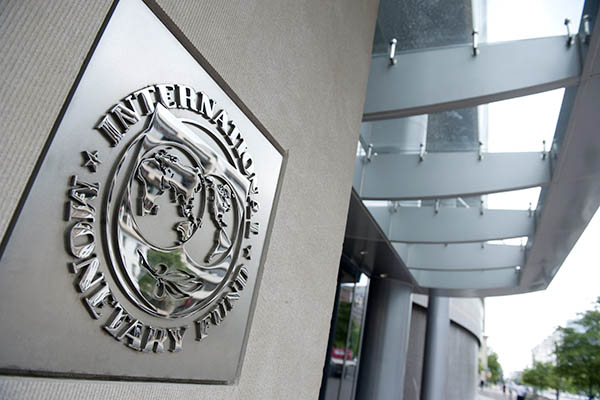
Saul Loeb—AFP
IMF urges cooperative action to prevent ‘additional deceleration’ as global GDP forecast for 2019 falls to 3.5 percent
The U.S.-China trade confrontations, Brexit and other uncertainty are threatening to drag down global growth even further, the International Monetary Fund warned on Monday.
In an update to its global economic forecasts that was even more pessimistic than those released just three months ago, the IMF emphasized that risks dominate the outlook.
The World Economic Outlook cut the global GDP forecast for this year to 3.5 percent from the 3.7 percent projected in October. And for 2020 the estimate was trimmed to 3.6 percent. And due to slowing momentum in latter part of 2018, from trade tensions and rising fears on global financial markets, growth last year was expected to come in at just 3.7 percent, two-tenths slower than the October forecast.
The fund released the report at the annual gathering of economic and financial leaders from around the world and once again urged cooperative action to defuse the risks. “With momentum past its peak, [and] risks to global growth skewed to the downside … policies urgently need to focus on preventing additional deceleration,” the IMF urged.
Several major economies saw sharp downgrades to the GDP estimates, including Germany, Italy and Mexico, along with a smaller cut for France amid the yellow vest demonstrations that have riven the country. However, the world’s two largest economies, currently the source of most of the risk to global growth, did not see further downward revisions. The U.S. is expected to grow 2.5 percent this year and 1.5 percent in 2020. China GDP is forecast to expand 6.2 percent in both years.
With growth already weakened by the tariffs imposed on hundreds of billions of dollars in annual trade, mostly between the U.S. and China, the global economy is more susceptible to additional risks.
An “escalation of trade tensions … remains a key source of risk to the outlook,” the IMF warned, pointing to the sharp decline in global financial markets in the final weeks of 2018.
Washington and Beijing declared a 90-day truce on Dec. 1, but the risk remains that tensions will flare up again in the spring and “casts a shadow over global economic prospects.”
Another major concern is the potential for a more severe slowdown in China, which would have repercussions throughout Asia. “As seen in 2015–16, concerns about the health of China’s economy can trigger abrupt, wide-reaching sell-offs in financial and commodity markets,” the report said. So far, China’s fiscal stimulus has cushioned the impact of the trade disputes.
As in October, the fund urged countries to negotiate a solution that will not inflict economic damage. The main policy priority is for countries “to resolve cooperatively and quickly their trade disagreements and the resulting policy uncertainty, rather than raising harmful barriers further and destabilizing an already slowing global economy.”
Beyond the trade risks, other sources of political uncertainty also have the potential to slow growth in major economies, including the month-long U.S. government shutdown, and the possibility of a no-deal Brexit.
In the case of Germany, the growth forecast for 2019 was cut 0.6 points to just 1.3 percent due to the impact on business and private consumption following new auto emissions standards—likely a one-time hit.
In France, the impact of massive street protests could trim growth even further than the 1.5 percent forecast for this year.
The WEO also forecast 1.5 percent 2019 growth for Britain, the same as in October, but warned the estimate is fraught with uncertainty since “as of mid-January, the shape that Brexit will ultimately take remains highly uncertain.”
Meanwhile, Mexico saw sharp downward revisions of 0.4 and 0.5 this year and next, to 2.1 percent and 2.2 percent, and crisis-stuck Venezuela is likely to see an “even more severe contraction.”
